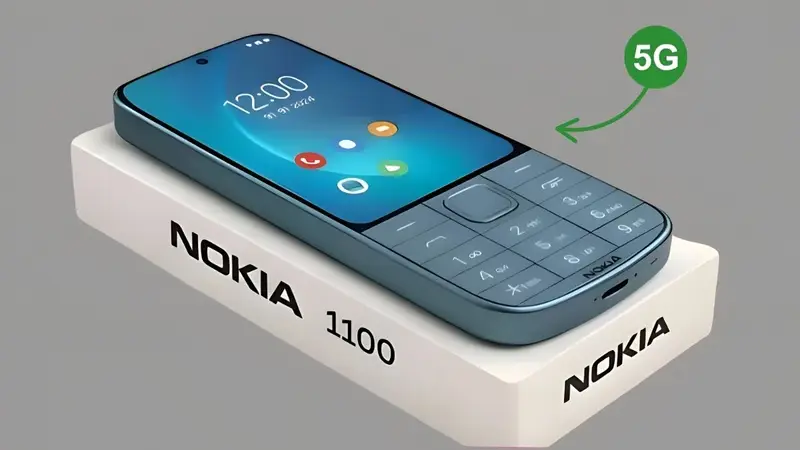Man, the Nokia 1100 is like that unbreakable buddy from the early 2000s who’s still talked about today—simple, tough, and the phone that put mobile tech in everyone’s pocket without the fancy frills. Launched in Q4 2003 as Nokia’s entry-level GSM candybar, it became the world’s best-selling phone with over 250 million units sold by 2005, outlasting batteries and drops like a champ. Discontinued in 2005, it’s a cult icon for nostalgia seekers chasing Snake game highs or flashlight reliability, though rumors of a 5G revival in 2025 videos are just fan dreams—no official comeback yet. Perfect if you’re hunting a vintage piece for collection or basic calls, but expect to pay Rs. 1,000-5,000 for used ones on OLX—though the monochrome screen might feel ancient next to smartphones.
Simple, Iconic Design
This brick’s a compact tank—106 mm tall, 46 mm wide, and 20 mm thick, tipping just 93 grams with battery for that effortless pocket fit on a crowded bus. The plastic body with removable back fights scratches like a pro, no IP rating but built to survive drops and dust—available in basic shades like black or blue. Monochrome graphic display (96×65 pixels) keeps it minimal, with a keypad that’s clicky for T9 texting. No camera or expandable storage, but the built-in flashlight was a game-changer for dark alleys—it’s got that classic Nokia stance, wide enough for grip but slim for one-hand use without feeling bulky.

Basic, No-Frills Features
Slide off the back, and the cabin’s a throwback hug—SIM slot for single line, 850 mAh Li-Ion battery lasting 400 hours standby or 4.5 hours talk time. The monochrome screen shows calls, SMS (up to 60 messages), and basic menu—no touchscreen, but navigation’s intuitive with a 4-way scroll key. Ringtones include 35 monophonic classics like the Nokia tune, plus composer for custom beats. No Bluetooth or USB, but it packs games like Snake II, Space Impact, and Bantumi for endless boredom-busters. It’s airy for basic use, with a speaker that’s loud for calls—no music player, but the build quality nails long sessions without creaks.
Efficient, Basic Power
The Series 30 OS runs on a simple processor—no apps or internet, but it’s lightning-fast for dialing or texting. Battery life is the star—up to 400 hours standby, 4.5 hours talk, or weeks on idle with the 850 mAh Li-Ion pack. No charging port drama; the proprietary charger tops it up in 2 hours. It’s got that old-school efficiency, sipping power like a dream—no overheating, just reliable basics for calls or SMS without the data drain.
Safety Basics Done Right
No fancy sensors or airbags—it’s a phone, not a car—but the durable plastic shell takes drops like a champ, chasing that “indestructible” legend. Key lock and PIN code add basic security, no biometrics. It’s built for urban knocks or rural dust, with a flashlight for night safety—solid for kids or elders wanting simplicity without worry.
Price and Quick Snag
Used originals fetch Rs. 1,000-5,000 on OLX or eBay for collectors—no new stock since 2005, hunt vintage shops for gems. Service at old Nokia spots runs Rs. 500-1,000 yearly—parts scarce but affordable. If a revival lands at Rs. 1-2 lakh, expect 2-year warranty—resale on classics holds 50-70% if babied, a fun flip for nostalgia buffs.
What Folks Say
Owners swear by the battery and toughness—”lasts forever, Snake’s addictive,” one retro fan raves—but no camera or apps bug modern users. Upkeep’s easy with cheap batteries, but parts hunts frustrate. Vs. 3310’s fame or 1101’s variant, 1100 wins on sales—grab if raw history’s your poison.
Quick Specs
Q4 2003 launch, Rs. 1,000-5,000 (used), Series 30 OS, monochrome display, 850 mAh battery—GSM 900/1800. Hunt online for black or deals—your brick legend’s waiting.